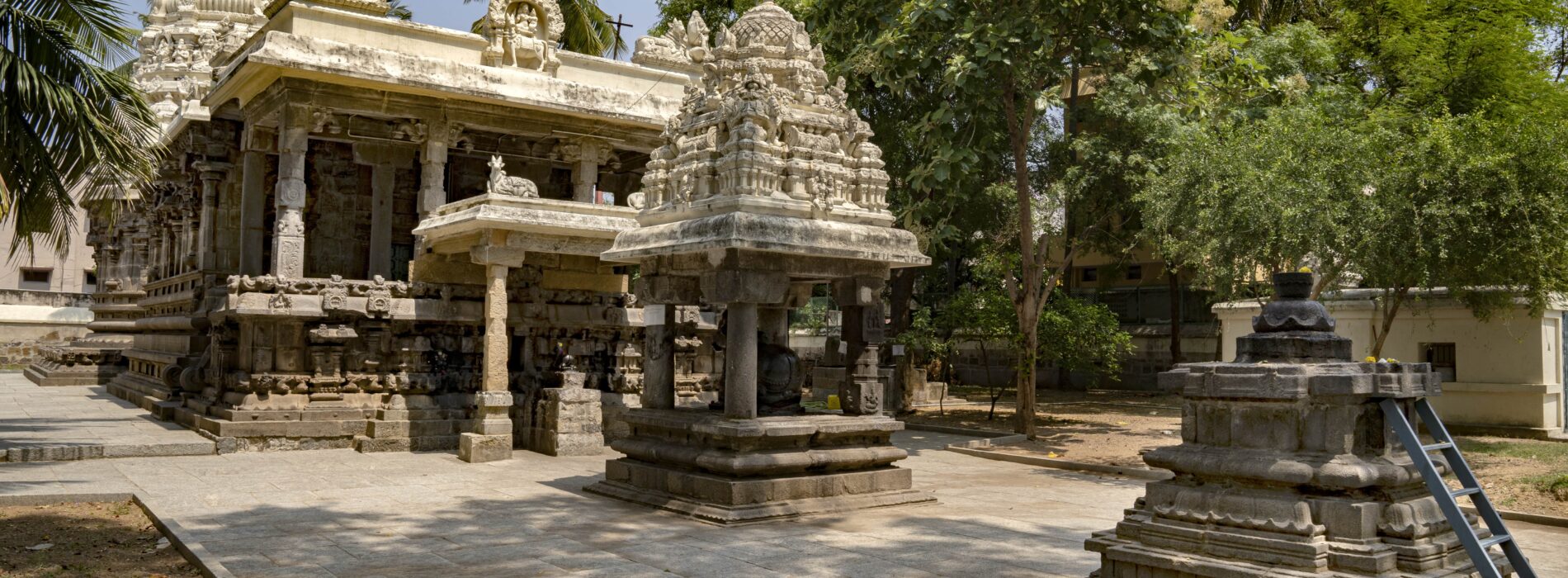Jvarahareshvara Temple
The Lord who cures even the incurable fevers
The magnificent Jvarahareshvara Temple is a captivating shrine located in Kanchipuram. This temple, known for its unique ovular structure and architectural brilliance, is believed to have been built during the reign of Rajasimha Pallava or Kulottunga Chola-III. Explore the Chola-style design, significant legends, and the divine grace that Jvarahareshvara bestows upon its devotees.
Architectural Splendor
Jvarahareshvara Temple boasts a distinctive ovular structure, showcasing the remarkable craftsmanship of the Pallava and Chola dynasties. Scholars suggest the influence of Rajasimha Pallava and Kulottunga Chola-III in its construction. The temple’s arrangement and design exude the charm of the Chola architectural style, complemented by a few pillars showcasing the Pallava style. Notably, two inscriptions of Vikrama Chola can be found, documenting land grants and tax exemptions for the temple.
Sacred Entrance and Mandapa
Enter the temple through a small five-tiered Rajagopura, leading to the courtyard. Here, you will encounter the exquisite four-pillared nandi mandapa, crafted from granite, with an elegant shikhara (spire) atop. The mandapa is adorned with the images of Shankhanidhi, Padmanidhi, Brahma, and Vishnu, creating a serene ambiance. Vinayaka and Parvati sculptures grace the archway, welcoming devotees to the Garbhagriha (sanctum sanctorum).
Legend of Divine Healing
According to the temple’s sthalapuranam (legend), the Devas (celestial beings) faced constant trouble from the demon named Sura. Seeking respite, Lord Brahma approached Lord Shiva, who was immersed in deep meditation, and implored him to eradicate the menace. Obliging their request, Lord Shiva unleashed the fire from his third eye, vanquishing the demon. However, the intense heat afflicted the Devas with a severe fever (Jvara). Instructed by Lord Brahma, they sought Lord Shiva’s blessings in Kanchipuram, who graciously healed them. Hence, Lord Shiva came to be known as Jvarahareshvara, the remover of fevers.
Sacred Sanctum and Healing Grace
The main temple stands on an elevated basement, showcasing exquisite carvings and intricate motifs. Within the temple, the Garbhagriha houses the divine form of Lord Shiva as Jvarahareshvara, represented by a sandstone linga mounted on a rectangular yonipitha. Notably, the rear wall of the Garbhagriha features a unique bas-relief depicting Shiva with Indra, further enhancing the sanctity of the temple. Devotees seek solace, healing, and blessings from Jvarahareshvara, recognizing his power to alleviate diseases and afflictions.
Jvarahareshvara Temple stands as a testament to the artistic finesse of the Pallava and Chola dynasties. Embark on a spiritual journey to this awe-inspiring shrine, marvel at its ovular structure, and immerse yourself in the divine grace and healing energy of Jvarahareshvara. Pay homage to Lord Shiva, the remover of fevers, and experience the profound sense of peace and tranquility that permeates this sacred abode.




